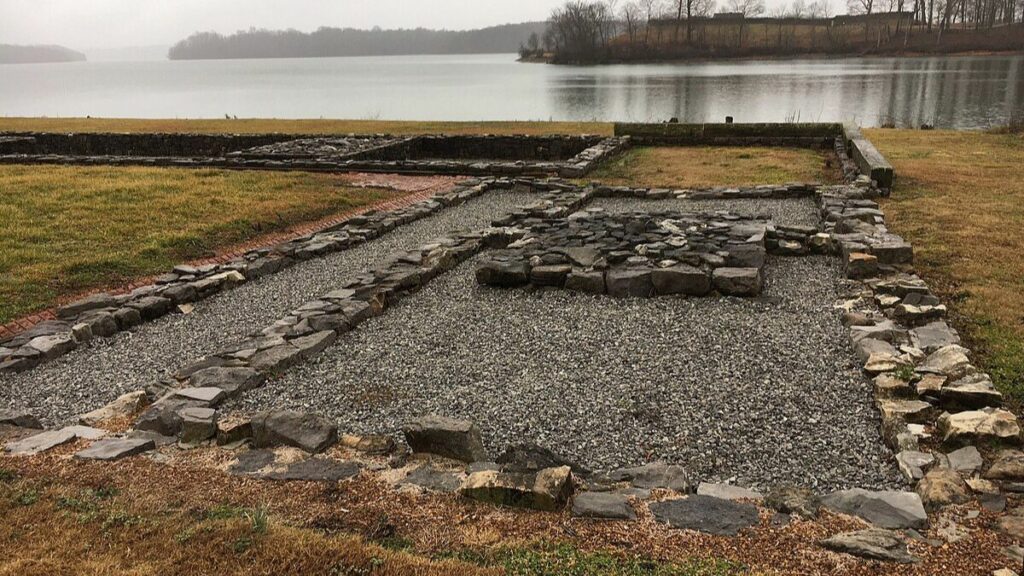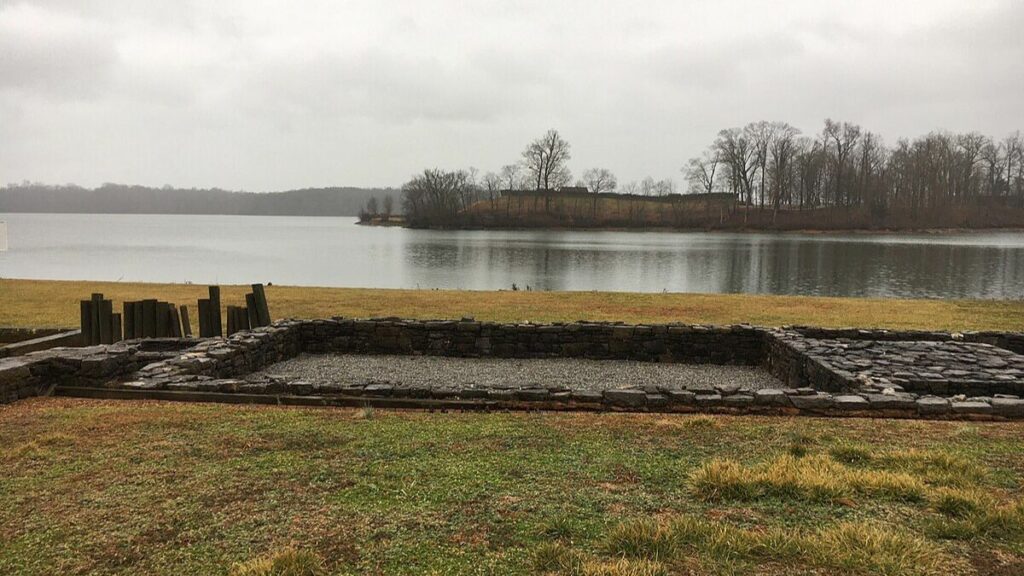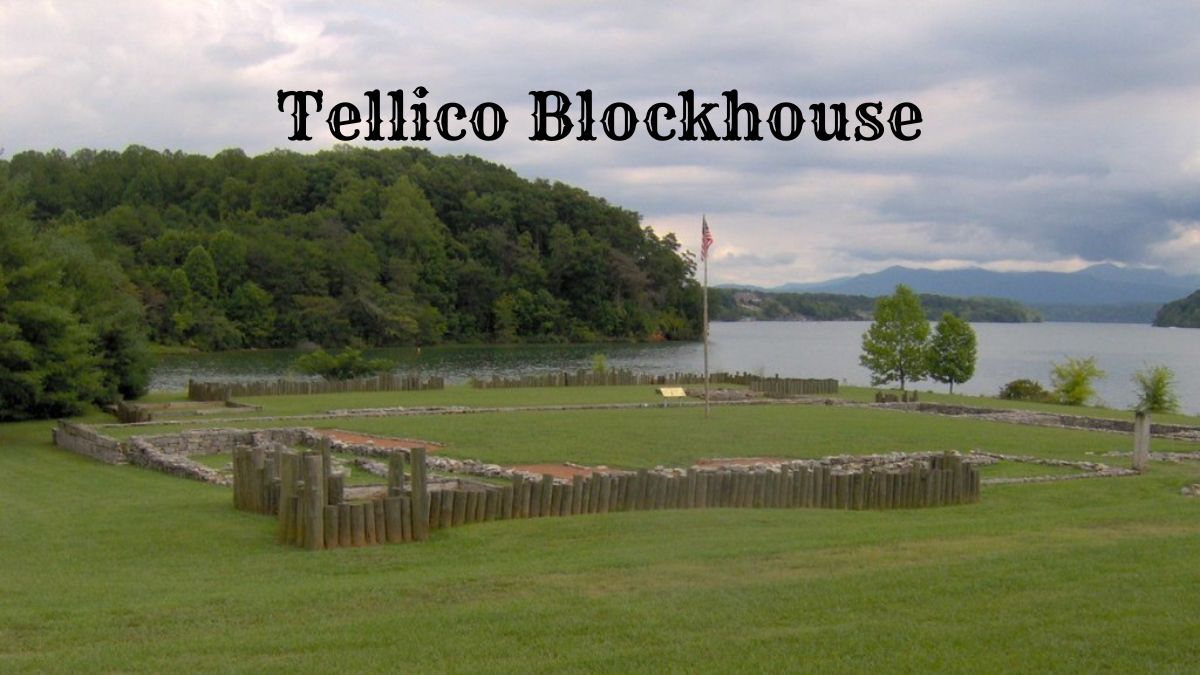The Tellico Blockhouse is a pivotal landmark in American history, particularly regarding its interactions with the Cherokee people and its strategic importance during the westward expansion.
Established in 1794 in Tennessee, it served as a military fortification and a diplomatic hub, crucial in treaty negotiations and trade with Native American tribes.
This multifaceted role made the blockhouse a center for peacekeeping and economic exchange.
Understanding the Tellico Blockhouse’s historical significance and modern relevance offers valuable insights into the complexities of early American frontier life and Cherokee relations.
History of the Tellico Blockhouse

The Tellico Blockhouse was crucial in early American history, especially concerning the Cherokee people and the United States’ westward expansion.
It served various military and diplomatic functions and was central to many key events and agreements.
Establishment and Purpose
Located in Tennessee, the Tellico Blockhouse was established in 1794.
It was built as a United States Fortification during the Cherokee–American Wars to serve multiple purposes.
Its primary purpose was to protect the settlers and facilitate diplomatic relations with the local Cherokee tribes.
The Federal Government viewed the blockhouse as a critical frontier post.
It functioned as a military fortification and a site for treaty negotiations and trade with the American Indian tribes.
This dual role made it a pivotal location for both peacekeeping and commerce.
Role in Cherokee-American Relations
The Tellico Blockhouse was central to diplomatic relations between the Cherokee and the United States.
It was where Indian Agents negotiated treaties and managed affairs with the tribes.
These negotiations often focused on land cessions and hunting rights.
The blockhouse became a symbol of both cooperation and conflict.
Agreements made there aimed to foster peace and secure land for American settlers but also led to significant tension.
This tension would later contribute to the eventual Cherokee Removal, known as the Trail of Tears.
Military and Trading Operations
As a US Military Outpost, the Tellico Blockhouse hosted soldiers and secured the region against resistance and external threats.
Beyond its military role, it was a trading post where goods flowed between the settlers and the Cherokee.
Trade at the blockhouse included weapons, food supplies, and textiles.
This commerce was crucial for the settlers’ survival and the Cherokee economy.
Moreover, the fort’s presence meant that the region became a hub of activity and exchange, fostering economic and cultural interactions.
Treaties and Cherokee Land
Several significant Treaties were signed at the Tellico Blockhouse.
These treaties often involved the cession of Cherokee land to the Federal Government in exchange for promises of protection and trade goods.
One of the paramount treaties was the Treaty of Tellico in 1798.
This treaty led to substantial land transfers and further solidified the American foothold in the region.
Despite the agreements, these treaties were frequently marked by coercion and unfair dealings, leading to ongoing land ownership and rights disputes.
Such disputes foreshadowed the eventual forced displacement of the Cherokee people.
Location of the Tellico Blockhouse

Tellico Blockhouse is located in Monroe County, East Tennessee. It lies near the convergence of the Little Tennessee River and Tellico Lake, near the historic Fort Loudoun State Historic Area.
Location and Natural Features
Tellico Blockhouse is situated near the modern town of Vonore, Tennessee.
The Little Tennessee River borders the site to the north and Nine Mile Creek to the west. The Hiwassee River flows nearby, contributing to the rich natural landscape.
Tellico Lake, a reservoir formed by the Tellico Dam, is a prominent water feature surrounding the area.
The blockhouse is part of a region with lush forestry and rolling hills that typify East Tennessee’s geography.
Strategic Importance
The location of Tellico Blockhouse was chosen for its strategic value.
It provided control over river traffic at the junction of major waterways like the Little Tennessee and Hiwassee Rivers.
This advantageous position became a buffer zone between the American settlers and the Overhill Cherokee towns.
Proximity to Knoxville enabled swift communication and supply routes, reinforcing its strategic utility.
Surrounding Overhill Cherokee Towns
Around Tellico Blockhouse were key Overhill Cherokee towns such as Chota and Tallassee.
These settlements were significant not only for their population but also for their political and cultural influence within the Cherokee Nation.
The region, known as the Little Tennessee River Valley, was central to the Overhill Cherokee’s homeland.
The valley’s fertile soil and ample water sources from the Little Tennessee River supported agriculture and trade, making it an area of considerable importance.
Economic Impact
The Tellico Blockhouse played a pivotal role in the economy, influencing trading systems, agricultural practices, and industrial growth in the area.
The Trading Post System
The Tellico Blockhouse was a key trading post connecting settlers and Native American tribes.
It was a hub for exchanging goods like furs, hides, and cottonseed.
Merchants benefited from the steady influx of raw materials, which were crucial for various industries.
This system also fostered relationships and dependencies between different groups, facilitating a mutual economic boost.
Traders used the goods exchanged at the blockhouse to create spinning wheels, looms, and related weaving tools.
This exchange helped in local production and contributed significantly to the area’s economic structure.
Agriculture and Farming
The region around the Tellico Blockhouse became central to agricultural activities.
Farming practices were enhanced by exchanging agricultural strategies and resources among settlers and Native American communities.
Introducing cotton and other crop seeds at the blockhouse helped diversify local farming.
Farmers started to grow cotton, leading to the establishment of spinning and weaving industries.
This agricultural diversity supported the local economy by ensuring a stable supply of raw materials and providing a means for economic resilience.
Industrial Advancements
Industrial activities saw significant growth with the agricultural and trading systems in place.
The Tellico Blockhouse enabled access to new technologies and techniques.
The use of cotton from nearby farms fueled the spinning and weaving industries, supporting local textile production.
This created a burgeoning cotton fabric industry that was traded and used locally.
Various industrial advancements followed, including developing tools and machinery like spinning wheels and looms and streamlining production processes.
These improvements allowed the region to boost its economic output and expand its market reach.
Social and Cultural Interactions
Tellico Blockhouse was a notable site for interaction between Cherokee and Euro-American pioneers during the late 18th and early 19th centuries. These interactions shaped the social and cultural landscape of the region significantly.
Cherokee and Euro-American Pioneers
The Cherokee people and Euro-American pioneers engaged in various forms of social and cultural exchange at Tellico Blockhouse.
The Cherokee, led by figures such as Hanging Maw, were key in negotiating land transactions and maintaining peace in the area.
Trade was critical, where goods such as furs and European manufactured items were exchanged.
Cherokee traditions and pioneer customs often influenced each other, creating a unique blend of cultural practices.
The presence of Interpreters like Silas Dinsmoor facilitated communication and understanding.
Life at the Garrison
Life at the Tellico Blockhouse garrison involved military duties and social interactions.
Soldiers stationed at the garrison worked to secure the area and maintain peace with the Overhill Cherokee Towns.
They often interacted with both Cherokee and settlers, contributing to a better understanding among the groups.
Daily activities included training, patrolling the surrounding areas, and engaging in communal events.
The garrison also hosted significant figures, including the Duke of Orleans, who visited the site, highlighting its importance.
Military Engagements and Security
The Tellico Blockhouse played a vital role in regional defense and the dynamics of military alliances and conflicts. Its strategic location influenced the growth of military power in the area.
Alliances and Conflicts
The Tellico Blockhouse was a central hub for negotiating alliances and navigating conflicts.
Notable interactions occurred between American soldiers and Native American tribes, particularly near the Hiwassee and Fort Loudon.
These alliances were crucial in maintaining peace and security.
The blockhouse also witnessed various military engagements, including skirmishes with local tribes.
From this point, officials like Henry Knox often coordinated defense strategies. The soldiers stationed at Tellico were pivotal in both defense and diplomatic missions.
Growth of Military Power
The establishment of the Tellico Blockhouse contributed to the growth of military power in the region.
Adjacent forts, such as Fort Southwest Point and the one in Kingston, created a network of strongholds enhancing overall security.
Routes like the Unicoi Turnpike facilitated troop movements and supply lines, bolstering the military presence.
The blockhouse served as an operational base, enabling American soldiers to extend control and effectively enforce territorial claims.
Explore More: 21 Historic Forts of Tennessee
Evolution and Decline
Over the years, the Tellico Blockhouse experienced significant changes due to shifts in policy and control, which impacted its role and importance.
Shifts in Policy and Control
The construction of the Tellico Blockhouse was originally driven by William Blount’s policy shifts, which were prominently signified through the Treaty of Holston.
The aim was to secure land cessions and maintain peace with the Cherokee.
In December 1811, control changed hands, further impacting the Tellico Factory and its operations.
John McKee replaced former officials and reshaped policies. The blockhouse’s pivotal role initially focussed on controlling relationships with the Cherokee.
Many factors, such as land cessions and the strategic position of Cherokee lands, altered the significance of the blockhouse.
The State of Georgia’s policies and broader events like the War of 1812 shifted priorities. Eventually, the Tellico Blockhouse declined in relevance.
Explore More: Army Forts in Tennessee
Preservation and Legacy
Preservation efforts have maintained the Tellico Blockhouse and provided access through key routes. Educational initiatives offer historical interpretation to visitors.
Blockhouse Road and Present-Day Access
The Blockhouse Road provides the main path to the Tellico Blockhouse.
It connects the historical site to modern infrastructure, ensuring accessibility.
This road, maintained by local authorities and historical societies, facilitates visits to the site and links it to nearby areas like Fort Loudoun State Historic Area.
This area also touches on Great Tellico and Chilhowee, adding to the historical significance.
Visitors can appreciate the landscape, which has remained largely unchanged since the Blockhouse’s time. Parking areas and informational signs make navigation straightforward.
Historical Interpretation and Education
Educational programs at the Tellico Blockhouse focus on its role in American outposts and interactions with the Cherokee.
Historians provide guided tours, emphasizing events like the Cherokee Removal and the Blockhouse’s strategic importance.
These programs highlight connections to nearby Fort Loudoun and historic sites like Tuskegee.
Interpretive signage and exhibits offer detailed insights into life at the Blockhouse and its military history.
These efforts ensure that both the local community and visitors from afar gain a deeper appreciation of the site’s legacy.

Cory is a website owner and content creator who enjoys fishing, history, coin collecting, and sports, among other hobbies. He is a husband and father of four.
Romans 15:4 For whatever was written in former days was written for our instruction, that through endurance and through the encouragement of the Scriptures we might have hope.

